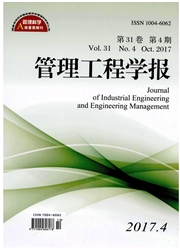

 中文摘要:
中文摘要:
本研究从企业外部环境的资源依赖关系入手,分析了国有股权以及行业内竞争强度如何影响企业的境外市场扩张战略,同时还分析了企业的技术能力如何调节这些影响。基于我国241家开展境外扩张的制造型上市公司5年的面板数据,研究发现企业的国有股权对境外市场扩张存在倒U型的作用,而企业所面临的行业内竞争对境外市场扩张存在正U型的作用。此外,企业的技术资源加强了国有股权与境外市场扩张间的倒U型关系,但并未显著影响行业内竞争与境外市场扩张间的正U型关系。本研究的结论对我国企业国际化战略提供了新的理论视角和观点。
 英文摘要:
英文摘要:
International market expansion is a strategic move through which firms expand their business spanning across national borders. Although theliterature largely focuses on international market expansion of firms from developed economies, a growing number of recent literatures have focused on firmsfrom emerging economies (EE, hereafter) engaging in international market expansion at an accelerated pace. Thus, it is worthy to examine drivers behind EEfinns' international market expansion. Existing studies conducted in developed economies tend to view firm-specific advantages as a basic driver of firms'international expansion. However, lacking sufficient firm-specific advantages is still a primary characteristic of EE finns. Hence, we need to go beyond thefirm-specific advantage view when investigating drivers of EE firms' international market expansion. Because EE firms often lack adequate resource endowment, they have to depend on some critical external actors for resources, such as domesticgovernment agencies and markets. The dependence relation between firms and environmental actors enables firms to acquire resources. The relation alsoencourages intervention from these actors on firms' decisions. According to the resource dependence theory (RDT), a primary strategy of these firms is escaping,by which the firms can decrease their dependence on some specific external actors. From the perspective, international market expansion of EE finns can beviewed as an escaping strategy by which the firms loosen constraints they face in their home countries. In EE, firms often depend on both local governments and markets for resources. State ownership creates an affiliation relation between government andfirms. It reflects the interdependence relationship between govemrnent and firm, and determines the extent of finn' accesses to government resources and thedegree of government intervention. Competitive intensity in an industry refers to the interdependence relationship between competitors and firm, anddetermine
 同期刊论文项目
同期刊论文项目
 同项目期刊论文
同项目期刊论文
 期刊信息
期刊信息
